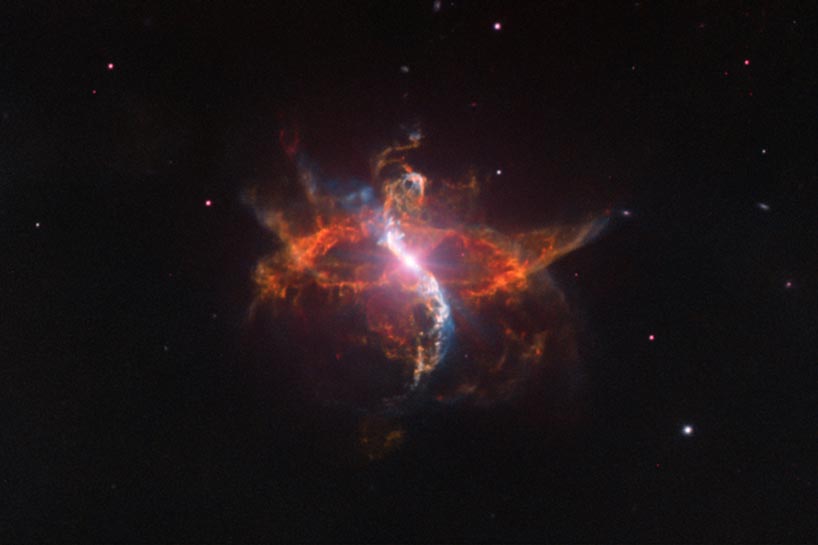
R Aquarii from 2012
Binary Star
RA 23h 43m 49.60s Dec -15° 17' 11.67"
Aquarius
1000 light years
5.99 x 3.73 arcminutes
North is 0.1° left of vertical
ESO
December 10, 2018
ABOUT THIS IMAGE:
This image reveals a dramatic binary star system named R Aquarii, located 700 light-years from Earth, as seen in 2012 by ESO's Very Large Telescope (VLT).
R Aquarii is a so-called "symbiotic binary", comprising two stars surrounded by a large, dynamic cloud of gas (a nebula). Systems like this contain two stars in an unequal and complex relationship. R Aquarii is made up of one hot white dwarf and one red giant. The red giant is losing matter to its small companion and occasionally ejecting matter in weird spurts, loops and trails, forming the intriguing shapes seen here.
There is a lot going on between the performers in this cosmic double act. The red giant is a variable star, with a brightness that changes by a factor of 750 every year and three weeks. The faint nebula is named Cederblad 211 and is thought to be the result of a violent nova 250 years ago. Also visible is a narrow, vertical, S-shaped feature, with blobs of superheated material moving outward at tremendous speeds of 600 to 850 kilometers per second.
R Aquarii was also imaged 15 years ago - and several times in the intervening period - to track its ongoing activity. The system is very dynamic and complex, and has expanded and evolved significantly in recent years